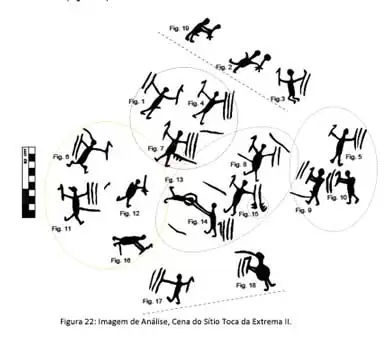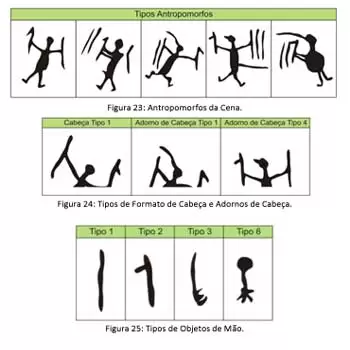School violence and prejudice are persistent and complex challenges that deeply impact student safety and development. In this context, incorporating the voices of children and adolescents in tackling these issues is not just relevant, but crucial. By taking an active role in devising solutions, they can transform their educational environments into safer and more inclusive spaces.
The Persistence of Violence
Historically, violence is a ubiquitous phenomenon, manifesting across all cultures and epochs, from prehistory onward. In schools, this violence is expressed through bullying, discrimination, and even physical assaults, often reflecting broader societal issues such as social inequalities and structural prejudices. The psychological and emotional impact of this violence impedes learning and can cause long-term psychological issues in youths. Understanding the complexity and roots of this phenomenon is the first step toward effectively addressing it. The rock art of Serra da Capivara covers a period from 12,000 to 6,000 years BP. Below, representations of violence-related rock art found in Serra da Capivara – Piauí – Brazil (Silva, 2012).


Even older are the traces of injuries likely caused by spears on the remains of a Neanderthal found in the mountains of Kurdistan – Shanidar 3 – dating back to 36,000 years BP.

These evidences indicate that acts of violence are as old as human existence, even predating the existence of Homo sapiens.
Applying Modern Theories to Understand School Violence
Theories such as Complexity Theory, General Systems Theory, and Cultural Psychology provide a lens through which we can view school violence not as isolated incidents, but as part of a broader system that includes social, cultural, and institutional influences. These theories highlight how complex interactions and interdependencies can be understood and addressed systemically. For instance, violence can be seen as a manifestation of power imbalances, which can be tackled by promoting greater equality and inclusion within the school environment.

Youth Protagonism: Definition and Applications in the School Environment
Youth protagonism emerges as a transformative force within the school environment, especially when considering contemporary challenges related to violence and prejudice. This protagonism is understood not only as participation but as the active leadership of children and adolescents in creating and reshaping educational and social practices that directly impact their daily lives, within the possibilities and limitations of both adults and students.
Defining Youth Protagonism
Youth protagonism is defined as the capacity and opportunity for children and adolescents to be heard, to actively participate in society, and to influence decisions that directly affect their lives. According to Pires and Branco (2007, 2023), this form of protagonism is a structuring value that seeks to counteract the historical invisibility of youth, especially in the school environment, promoting participation that extends beyond the symbolic, manifesting in concrete and decisive actions.
The Role of Schools in Fostering Protagonism
Schools that promote youth protagonism not only encourage student participation in school activities but also integrate their voices into structural and curricular decisions. This involves allowing young people to play an active role in developing anti-bullying policies, formulating conduct codes, and implementing projects that value diversity and inclusion. It also enables them to establish and participate in networks aimed at integrating various initiatives, considering territories and populations with similar issues.
Protagonism as a Strategy for Social Transformation
Through protagonism, young people learn to negotiate, resolve conflicts, and develop a critical understanding of the reality that surrounds them. This process not only prepares them to be more active and responsible citizens but also contributes to a more harmonious and inclusive school environment. Schools that adopt this approach notice a significant reduction in violence cases and an increase in the quality of student interactions.
Challenges and Opportunities of Youth Protagonism
Promoting youth protagonism presents its challenges. It requires educators to shift their mindset from an authoritarian role to that of a mentor and facilitator. Additionally, it demands educational institutions open up to remolding their pedagogical practices to genuinely include student contributions. However, the rewards of this investment are immense, including the development of a generation better equipped to handle the complex social issues of our times.
Youth Protagonism in Networks Addressing Violence
There is no doubt that including young people in formulating policies and practices to combat violence and prejudice is crucial. Studies show that when children and adolescents are listened to, and their opinions valued, there is a significant increase in the success of prevention and intervention initiatives (e.g., Schneider, 2021). They bring unique and innovative perspectives, enhancing the effectiveness of adopted measures, and creating a more welcoming and safe environment for themselves and their peers.
Creating Local Networks to Combat Violence and Prejudice
From the standpoint of valuing youth protagonism, forming local networks that integrate schools, communities, and families is a promising strategy for combating violence and prejudice in schools. These networks function best when decentralized, allowing for quick and tailored responses to the specific realities of each local context. Through these networks, initiatives such as workshops, mentorship programs between older and younger students, and awareness campaigns can be effectively implemented.
Final Words
The involvement of young people in developing strategies to address violence and prejudice in schools is essential. By valuing their voices and perspectives, we not only create more effective solutions but also promote healthier and fairer development for everyone in the school environment. Therefore, it is imperative that schools, politicians, and communities recognize and promote this youth protagonism as a central part of the strategies to combat school violence.
This approach not only addresses current problems but also helps prepare future generations to lead with empathy, justice, and mutual respect, transforming our schools into models of peaceful and inclusive environments.
Learn more about the proposal:
References
Pires, S. F. S., & Branco, A. U. (2007). Protagonismo infantil: coconstruindo significados em meio às práticas sociais. Paidéia, 17(38), 311-320.
Pires, S. F. S., & Branco, A. U. (2023). Protagonismo como valor estruturante: Enfrentando a invisibilidade infantojuvenil na escola. Revista Portuguesa de Educação, 36(2), e23035-e23035.
Schneider, M. C., Martins, S. N., & da Silva, J. S. (2021). Protagonismo Infantil na prática: o ensino desenvolvido com a participação dos estudantes na Educação Básica. Research, Society and Development, 10(1), e14910111574-e14910111574.
Silva, L. D. S. (2012). Padrões de apresentação das cenas coletivas de violência humana nas pinturas rupestres pré-históricas da área arqueológica do parque nacional Serra da Capivara-PI (Master’s thesis, Universidade Federal de Pernambuco).
This post is also available in pt_BR.


